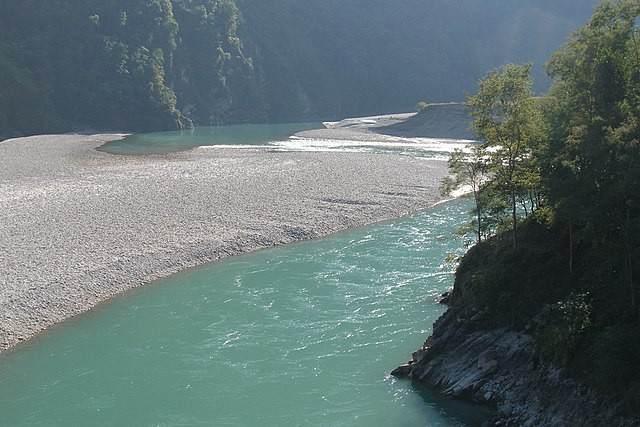The Gandaki River: Nepal's Serene Heartbeat Professional
Nov 30th, 2023 at 09:56 Blogs Gandaki 513 views Reference: 1168Location: Gandaki
Price: Contact us
The Gandaki River: Nepal's Serene Heartbeat
Introduction:
Nestled within the Himalayan expanse of Nepal, the Gandaki River emerges as a vital lifeline, both geographically and culturally. Often referred to as the "Narayani" in southern Nepal, this majestic river holds a significant place in the hearts of the people, shaping landscapes, fostering biodiversity, and intertwining with the cultural fabric of the region. This article delves into the geological origin, cultural importance, and environmental significance of the Gandaki River.
Geographical Origin and Course:
The Gandaki River originates in the Tibetan Plateau, making its way southward through the trans-Himalayan region before entering Nepal. As it traverses the diverse landscapes of the country, the river is fed by numerous tributaries, including the Trishuli, Marsyangdi, and Kali Gandaki rivers. These tributaries contribute to the Gandaki's grandeur, shaping its course through deep gorges, valleys, and fertile plains.
One notable feature along the course of the Gandaki is the Kali Gandaki Gorge, often referred to as the world's deepest gorge. This geographical marvel adds to the allure of the river as it cuts through the majestic Annapurna and Dhaulagiri mountain ranges.
Cultural Significance:
The Gandaki River basin holds immense cultural importance in Nepal. The river flows through regions inhabited by diverse ethnic communities, each with its own unique traditions and practices influenced by the river's presence. Pilgrims and travelers often find solace in the sacred sites along the banks of the Gandaki, where ancient temples, shrines, and monasteries stand as testaments to the cultural heritage of the area.
The town of Devghat, situated at the confluence of the Gandaki and Trishuli rivers, is a sacred pilgrimage site for Hindus. Here, the river takes on an added spiritual significance, attracting devotees who come to perform rituals and seek blessings.
Environmental Diversity:
The Gandaki River basin is renowned for its ecological diversity, fostering a rich array of flora and fauna. The river and its tributaries support a variety of aquatic life, including diverse fish species. The surrounding landscapes are characterized by dense forests, providing habitats for wildlife such as deer, leopards, and various bird species.
Conservation efforts are underway to protect the Gandaki's ecosystems, with a focus on sustainable development and the preservation of biodiversity. The river's water resources also play a crucial role in supporting agriculture and sustaining local communities.
Hydropower Potential:
In addition to its cultural and environmental significance, the Gandaki River holds substantial hydropower potential. The river's flow is harnessed through various hydroelectric projects, contributing to Nepal's efforts to meet its energy needs in a sustainable manner.
Conclusion:
The Gandaki River, with its meandering course through the Himalayan terrain, is more than just a waterway—it is a cultural icon, an environmental treasure, and a source of sustenance for the people of Nepal. As the country continues to evolve, it is imperative to balance development with conservation, ensuring that the Gandaki River remains a vibrant and thriving entity, weaving its way through the hearts and landscapes of this Himalayan nation.


